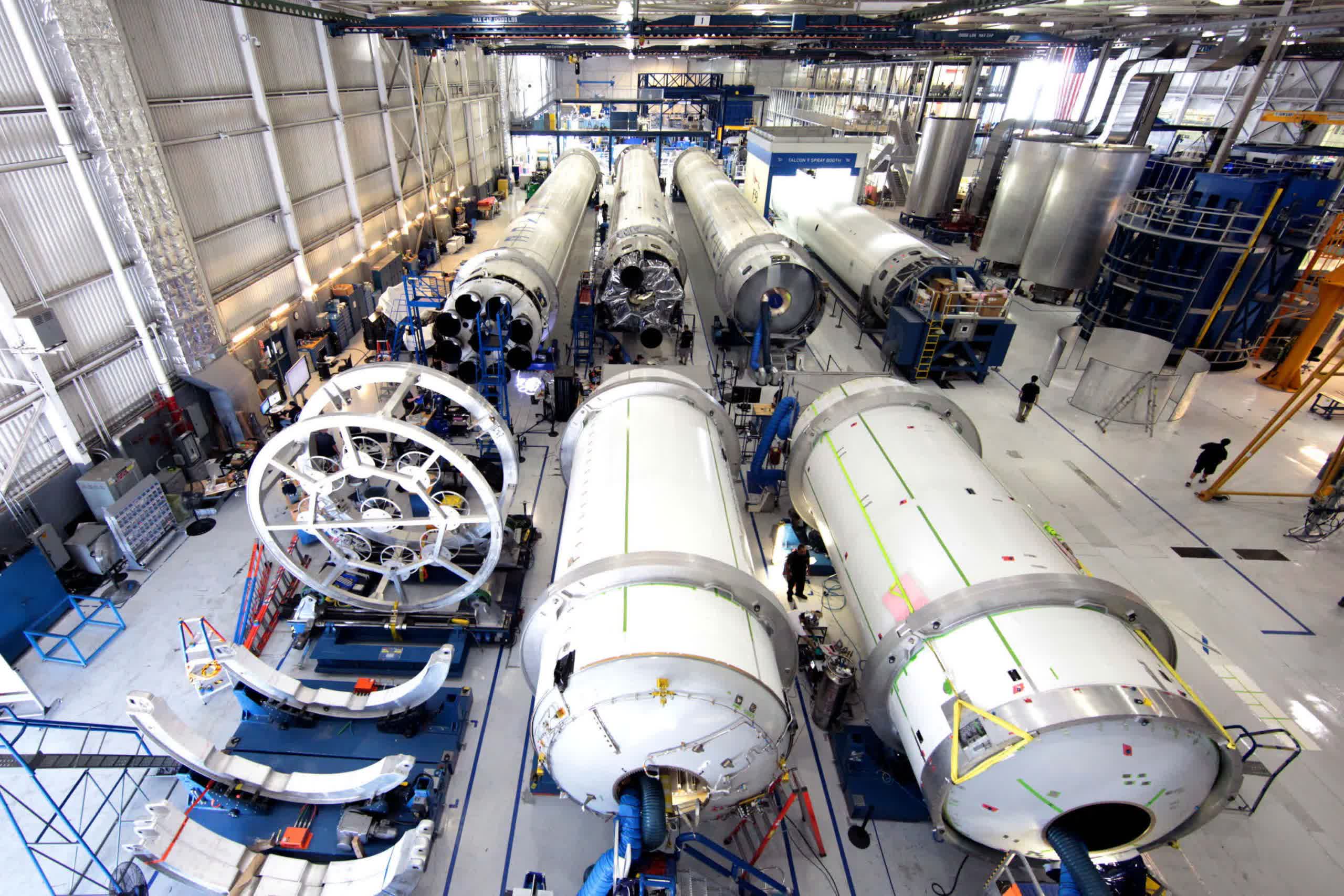

One of SpaceX's new Starlink V2 mini-sats has fallen from orbit | TechSpot
source link: https://www.techspot.com/news/98207-one-spacex-new-starlink-v2-mini-sats-has.html
Go to the source link to view the article. You can view the picture content, updated content and better typesetting reading experience. If the link is broken, please click the button below to view the snapshot at that time.

One of SpaceX's new Starlink V2 mini-sats has fallen from orbit
The first of potentially several controlled deorbits
By Cal Jeffrey Today 4:29 PM
In a nutshell: The latest batch of Starlink satellites has had trouble getting into orbit. All 21 descended when they were supposed to ascend about two weeks after launch. Most stabilized and began rising again, but four continued to fall. One has burned up in Earth's atmosphere, and Elon Musk said there could be more to come down, forcing ground control to scrub a second launch last month.
In February, SpaceX launched a set of 21 mini-satellites known as Group 6-1 for its expanded Starlink system. The company hopes to make a bundle off the tiny craft by charging a premium for Starlink's $200 per month Global Roaming service. The feature should allow RV users to receive and use internet service while in motion.
Unfortunately, it seems that one of the mini-sats had trouble gaining a maintainable orbit. Multiple Starlink observers noted that Starlink V2 Mini 30062 lost altitude and fell in a controlled deorbit off the coast of California on Monday. The tiny device likely burned up on re-entry.
The V2 Mini sats seem to be collectively lowering their altitude. @planet4589 is this to be expected? Trajectory is certainly uncommon when looking at other Starlink launches. pic.twitter.com/O4iwWFyyHb
— Starlink Insider (@starlinkinsider) March 16, 2023
The failed satellite was one of a group of four that included 30042, 30051, and 30058 that Harvard-Smithsonian astrophysicist Jonathan McDowell is watching as they approach their stabilized orbital altitude. Another unofficial observer, Starlink Insider, first noticed trouble with all 21 Group 6-1 satellites losing altitude on March 16 (above), which stirred up speculation within the community.
On March 22, Elon Musk confirmed that mission control was aware of the situation and had actually anticipated having "some issues" with the new tech on the version 2 sats. He added that the crew would deorbit some while the rest would eventually reach their cruising altitude above the International Space Station's orbit of 408 km. Starlink V2 Mini 30062 might be the first of several that could re-enter.
Lot of new technology in Starlink V2, so we're experiencing some issues, as expected.
— Elon Musk (@elonmusk) March 22, 2023
Some sats will be deorbited, others will be tested thoroughly before raising altitude above Space Station.
In addition to enabling on-the-go internet for RV users, SpaceX hopes to fill in some coverage gaps with the new orbiters. Eventually, it plans to replace the Minis with "next-generation" full-sized satellites. However, those can't launch until SpaceX has a rocket that can carry heavier payloads. Its current Falcon 9 just isn't stout enough for the task.
Space News notes that in the meantime, Space X had plans to launch a second batch of V2 Minis sometime in March. However, the trouble with Group 6-1 may have forced ground control to scrub that launch. Currently, SpaceX has about 4,000 first-generation mini-sats in orbit. The Group 6-1 craft are slightly bigger and have upgraded communications equipment. However, SpaceX has been tight-lipped about what those upgrades contain.
Recommend
About Joyk
Aggregate valuable and interesting links.
Joyk means Joy of geeK